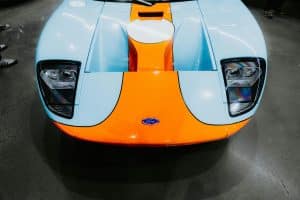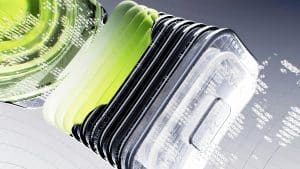Automotive Designers Draw Inspiration from Nature
The automotive industry has always been at the forefront of innovation and creativity. From engineering advancements to cutting-edge technology, designers constantly push the boundaries to create vehicles that are both functional and visually stunning. But where do these designers draw their inspiration from? It turns out, the answer is often found in the natural world. In recent years, automotive designers have increasingly looked to nature for inspiration, resulting in some of the most groundbreaking and beautiful car designs in history.
The Fascination with Nature
Nature has always been a source of fascination for humans, with its intricate designs and flawless engineering. From the delicate curve of a seashell to the aerodynamic shape of a bird’s wing, nature’s designs have served as inspiration for countless inventions and advancements. And the world of automotive design is no exception.
Automotive designers have long been captivated by the beauty and functionality found in nature. The curves and lines of a car’s body can often be seen mimicking the sleekness of a predatory cat, or the streamlined shape of a fish. The fascination with nature’s design has recently led to an increased focus on using natural elements in the development of new vehicles.
Nature-Inspired Designs
Biomimicry
One of the primary ways that automotive designers draw inspiration from nature is through biomimicry. Biomimicry is the practice of studying and imitating nature’s designs and processes to solve human problems. In the automotive industry, this often translates to incorporating natural shapes, materials, and processes into the design and manufacturing of cars.
One example of this is seen with the Mercedes-Benz Bionic car, which was inspired by the structure of the boxfish. The car’s exterior is designed to resemble the boxfish’s hexagonal scales, allowing for reduced drag and improved aerodynamics. This natural design inspiration not only resulted in a visually stunning car but also increased its efficiency and performance.
Sustainable Materials
In recent years, there has been a growing push towards sustainability and eco-consciousness in the automotive industry. As a result, designers are turning to natural and organic materials to create both functional and aesthetically pleasing vehicles. For example, Nissan’s Leaf is the first mass-produced electric car to use plant-based materials in its interior, including corn-based dashboard plastics and sugarcane-based resin for certain parts.
Additionally, companies like Tesla are using sustainable materials, such as vegan leather made from mushroom fibers, in their vehicles to reduce the environmental impact of car production. This focus on natural and sustainable materials not only benefits the environment but also allows for unique and innovative designs that set these vehicles apart from traditional cars.
The Future of Nature-Inspired Designs
Nature will undoubtedly continue to serve as a source of inspiration for automotive designers in the future. As technology and techniques continue to advance, we can expect to see even more innovative and sustainable designs influenced by nature.
One area that is currently being explored is the use of self-healing materials inspired by the regenerative abilities of animals, such as the ability of a salamander to regrow a limb. This could lead to cars that can self-repair minor damages, reducing the need for costly repairs and replacements.
With the increasing focus on environmentally friendly and sustainable practices, we can also expect to see more vehicles utilizing natural and organic materials in their construction. This may also lead to advancements in the development of eco-friendly fuels and alternative power sources for cars.
In Conclusion
The world of automotive design has long been shaped by the influence of nature. From biomimicry to the use of sustainable materials, designers continue to draw inspiration from the natural world to create innovative and visually striking vehicles. As our understanding of nature and technology evolves, we can expect to see even more extraordinary and nature-inspired designs on our roads in the future.










